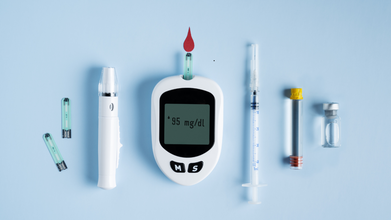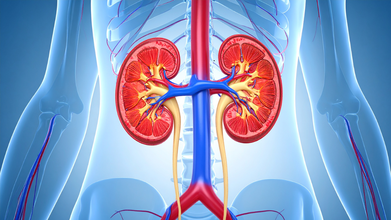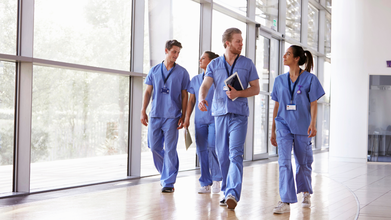- Health Conditions A-Z
- Health & Wellness
- Nutrition
- Fitness
- Health News
- Ayurveda
- Videos
- Medicine A-Z
- Parenting
Covid, Cold, Or Flu: How To Differentiate Between These Infections?

Credits: Canva
COVID-19 is back, and so are other seasonal viruses. One of the things people are getting confused with is whether their symptoms are of common cold, flu, or COVID? Is there a way to tell which one do you have? How can you differentiate?
Why Do Viruses Spread More in Colder Months?
As autumn is here, so are the infections. The weather is getting cold and diseases are on the rise. Before we differentiate between the three, let us first understand why do such viruses and diseases increase during colder months? There is a belief that cold weather directly causes colds, however, is a common myth. What really happens is linked more to our lifestyle in winter. Shorter days and lower temperatures push us indoors, into warm, enclosed spaces where viruses can spread more easily.
Children returning to school and nursery after summer holidays often act as “mini carriers,” bringing germs home.
This is also the ‘back to school’ time, when freshers living in halls attend social events in closed quarters are more vulnerable. The places are also poorly ventilated, are crowded, and thus it works as a perfect breeding ground for infections, whether COVID, flu, or common cold.
Covid vs Cold vs Flu: How To Spot The Difference?
While these illnesses share overlapping symptoms, there are certain things that can help you differentiate between the three. Here’s how you can know which infection you have.
COVID
How it begins: Initially, symptoms of COVID can mimic flu-like symptoms
What are the primary symptoms of COVID?
- Loss of taste
- Loss of smell
- Sore throat: the new variants are also causing razor-sharp pain in the throat
- Diarrhea or stomach upset
The biggest difference here is the dry and persistent coughing, which when you have a cold will not be dry in nature.
How it impacts? The COVID may vary from mild to severe
Since the pandemic, Covid has blurred the lines between seasonal infections. Current strains can trigger flu-like fatigue, fever, and cough. But the loss of taste or smell and digestive issues are stronger indicators of Covid.
Common Colds
How it begins: The symptoms of common cold starts gradually.
What are the primary symptoms of Common Cold?
- Stuffy or runny nose
- Sore throat, but not razor-blade like pain
- You may feel pressure in the ears
Here, the biggest difference is also in cough, which is often mucus-filled and chesty. Whereas in COVID, the cough is dry.
How it impacts? While it is annoying in the beginning, especially due to the blocked nose and ears, the congestion clears up overtime and usually doesn’t stop daily activities.
Colds typically start with a tickle in the throat or pressure in the ears before progressing to nasal congestion and cough. Most people can carry on with their routines despite the discomfort.
Flu
How it starts? In many cases, the flu may catch you out of the blues, many describe the onset as sudden.
What are the primary symptoms of Flu?
- Fever
- Chills
- Muscle aches
- Exhaustion
While the cough here is also dry in nature, which may make one get confused with COVID, there is no razor-blade like symptom, which can be used as a marker to differentiate.
How does it impact? Flu often requires bed rest.
Unlike a cold, flu can leave you feeling completely wiped out. Body aches and high fever are distinguishing features, and recovery often takes several days of rest.
Your Butt Shape Could Be a Clue to Your Diabetes Type; Here’s How

Credits: Canva
The shape of your gluteus maximus, the largest muscle in your backside, may offer surprising clues about your likelihood of developing diabetes. New research suggests that the contours of this major muscle change with age and health conditions, helping scientists better understand how fitness, muscle health, and metabolism are connected.
Ageing, Weight, and Diabetes: What We Already Know
For years, the NHS has warned that ageing and excess weight increase the risk of developing Type 2 diabetes. However, this new study goes beyond traditional measures, proposing that the shape of the gluteus maximus itself shifts as people age or develop conditions such as osteoporosis or diabetes. These subtle muscular changes could provide valuable information about a person’s metabolic health.
Why the Gluteus Maximus Matters
Researchers from the University of Westminster highlighted that the gluteus maximus plays a key role not just in movement but also in metabolic regulation. Healthy, well-maintained muscles can improve blood sugar control and reduce the burden on organs involved in glucose processing.
Dr Marjola Thanaj, co-author of the study from the university’s Research Centre for Optimal Health, explained, as reported by Independent: “People with higher fitness, as measured by vigorous physical activity and hand grip strength, had a greater gluteus maximus shape, while ageing, frailty and long sitting times were linked to muscle thinning.”
Mapping the Muscle
To understand these differences, researchers used advanced MRI 3D mapping to create a detailed anatomical model of the gluteus maximus. By analyzing more than 61,000 MRI scans from the UK Biobank database, they discovered that the shape, not the size, of the muscle varied significantly between individuals with diabetes and those without it.
What the Study Found
The MRI analysis revealed distinct, sex-specific patterns linked to Type 2 diabetes. Among male participants living with the disease, those classified as “frail” showed widespread muscle shrinkage across the gluteus maximus, indicating a loss of muscle quality and strength.
Women with diabetes, on the other hand, had enlarged muscle shapes — not because of increased muscle strength, but because of fat infiltrating the muscle tissue. This type of fat infiltration often signals declining muscle function and poorer metabolic health.
Dr Thanaj said these patterns underline a crucial point: men and women can experience the same illness in very different biological ways, which may influence diagnosis and treatment strategies in the future.
Why Maintaining Muscle Mass Matters
Beyond appearance or strength, muscle health is essential for long-term wellbeing. Maintaining muscle mass supports blood sugar regulation, reduces the risk of cardiovascular disease, and lowers the likelihood of developing fatty liver disease, all conditions closely linked to metabolic health.
Professor Louise Thomas, senior author of the study, told The Times: “Maintaining muscle mass as we age is one of the most important things we can do for our long-term health. If people understand how important their muscles are, and make small changes to keep them healthy, that could have a huge impact on disease across the population.”
Small Steps to Strengthen Your Glutes
Improving glute muscle health doesn’t require intense gym sessions. Simple actions such as taking the stairs instead of the lift, adding squats or lunges to your routine, or breaking up long periods of sitting can help tone and strengthen the gluteus maximus.
4 Simple Tests That Can Detect Kidney Diseases Early, According To Doctor

Credits: Canva
Kidney disease is rising at an alarming pace worldwide, and it’s now among the top causes of death. A Lancet study highlights that the number of people living with chronic kidney disease jumped from 78 million in 1990 to nearly 788 million in 2023. That’s a massive tenfold spike, and a reminder that our kidneys need more attention than we realize.
The tricky part? Kidney problems often progress silently. Many people don’t realize anything is wrong until the kidneys are already significantly damaged. That’s why experts strongly emphasize early screening. According to nephrologists like Dr Arjun Sabharwal, a few simple tests — often quick and inexpensive — can help catch kidney issues early and improve treatment outcomes.
Below are the four key tests everyone should know about, especially if you have diabetes, high blood pressure, a family history of kidney disease, or you’re simply trying to stay proactive about your health.
Creatinine Blood Test & eGFR: Your First Kidney Health Check
Creatinine is a waste product filtered out by the kidneys. A routine blood test measures its level, but creatinine alone doesn’t tell the full story. That’s where eGFR (Estimated Glomerular Filtration Rate) comes in.eGFR uses creatinine values along with age and other factors to estimate how well your kidneys are functioning overall. Doctors often say, “Creatinine is just a number — eGFR tells you how much your kidneys are working.”
An eGFR below normal may be an early signal that your kidneys aren’t filtering efficiently, even if you feel fine.
Cystatin C: A More Accurate Indicator for Some People
Cystatin C is a protein produced naturally by all cells. When kidneys are healthy, its levels stay stable; when the kidneys struggle, the levels rise.
Experts highlight that Cystatin C can be more reliable than creatinine for people with very high muscle mass, those who work out intensely, or individuals taking supplements that may affect creatinine readings. If creatinine results seem unclear or inconsistent, this test adds clarity.
Urine Dipstick Test: Quick and Tells You a Lot
Before kidney function takes a major hit, the body often shows early warnings — one of which is protein leakage in urine. A urine dipstick test is one of the fastest ways to detect this.
A chemically treated strip is dipped into your urine sample, and if proteins like albumin are present, the strip changes color. It’s simple, non-invasive, and helpful for spotting early kidney damage.
Urine Protein-to-Creatinine Ratio (UPCR): How Much Protein Is Leaking
If a dipstick shows abnormalities, the next step is often a UPCR test. This test measures exactly how much protein is leaking into the urine relative to creatinine. Higher levels may signal worsening kidney function or underlying disease. Doctors use UPCR to assess the severity of kidney damage and monitor progress over time.
When to See a Nephrologist
If any test shows rising creatinine, an abnormal eGFR, protein in urine, or blood detected on a dipstick, it’s crucial to book an appointment. Lifestyle tweaks, home remedies, or detox drinks cannot reverse kidney damage. Expert evaluation is essential.
Top 5 Infectious Diseases That Disrupted Healthcare System Worldwide In 2025

Credits: Canva
In 2025, thanks to climate change, rapid urbanization, and frequent travels, new viruses, their strains, and infections have spread frequently. Infections have affect millions and some diseases have come back with their new strains, which have been more contagious, whereas other diseases are finding new ways to emerge.
As we look back at the year, which is about to end in just another month, let us look back at the top 5 infectious diseases of 2025.
Respiratory Infections
In 2025, respiratory infections were the most widespread, with new COVID-19 variants emerging every now and then. Along with this common flu too has emerged. This has weakened immunity and made elderly and infants, and people with comorbidities more vulnerable to the diseases.
The new COVID variants in India are linked with the JN.1 variant and its sub-variants like LF.7 and NB.1.8. The COVID variants in the UK which were active were XFG, NB.1.8.1, or known as the Stratus and Nimbus variants. Other variants were XFG.3, XFG.5, and XFG.3.4.1.
Tuberculosis (TB)
Tuberculosis still continues to be a major infectious disease in 2025, especially in countries like India. As per the World Health Organization (WHO), tuberculosis caused 1.25 billion deaths in 2023. It becomes the world's leading infectious disease after COVID-19.
Each day, close to 3,425 people lose their lives to TB, and close to 30,000 people fall ill with this preventable and curable disease. About 10.8 million people got TB in 2023, which include 6 million, 3.6 million women, and 1.3 million children.
Dengue and other mosquito-borne infections
Mosquito-borne diseases like dengue, chikungunya, malaria, and Zika continued to rise in 2025. The reason being changing weather patterns. Dr Sanjeev Bagai, Chairman of Nephron Clinic, and Senior Consultant Pediatrician and Nephrologist points out that earlier the mosquito-borne diseases were seasonal, however, due to rapid urbanization and climate changes, these diseases have stayed all round the year.
Hepatitis Infections
Hepatitis B and Hepatitis C are among the most common Hepatitis infections in 2025. However, there have been outbreaks of Hepatitis A and E in unsafe water and food. Chronic hepatitis can also damage liver and also lead to cancer. It is a concern because it spreads through contaminated food, unsafe water, blood, and sexual contact. While many people may not show symptoms until serious liver damage occurs.
Symptoms also include jaundice, dark urine, fatigue, nausea, and abdominal pain.
Gastrointestinal Infections
Food- and water-borne infections are still common across the world. Illnesses like salmonella, cholera, rotavirus, and norovirus often spread in areas where hygiene, sanitation, and food safety are poorly maintained.
Why are these infections risky?
They can spread extremely fast, especially among children and older adults. Severe diarrhea and vomiting can lead to dangerous dehydration if not treated in time.
What symptoms should you look out for?
Persistent diarrhea, vomiting, stomach cramps, fever, and signs of dehydration. The best prevention is simple: drink clean water, wash hands regularly, and eat properly cooked food.
© 2024 Bennett, Coleman & Company Limited

